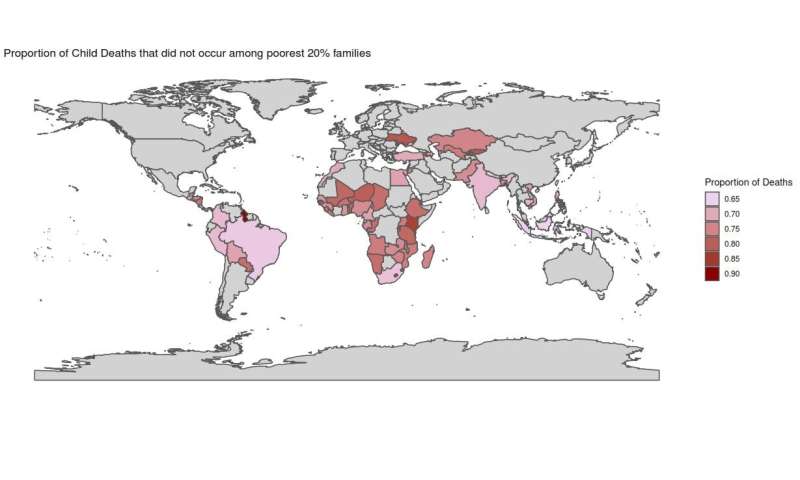
A new model can more accurately and efficiently assess which children are at highest risk of preventable death, according to a study published October 14 in the open-access journal PLOS ONE by Antonio Ramos from the Fielding School of Public Health, UCLA, U.S., and colleagues.
One of the UN’s Sustainable Development Goals calls for a substantial reduction in preventable deaths for children five and younger by 2030. To effectively monitor and reduce inequities in under-5 mortality, it’s necessary to identify children at highest risk so they can receive intervention. However, recent studies have shown that multiple risk factors are implicated in under-5 mortality, and program targeting based purely on poverty can be inefficient. In this study, Ramos and colleagues describe a new, more comprehensive model that uses data from multiple demographic variables to measure mortality inequities and identify high-risk subpopulations of children that would otherwise be left behind.
To build this framework, the authors used Demographic and Health Surveys (DHS) data on 1,691,039 births from 182 different surveys across 67 low- and middle-income countries (LMIC). After estimating mortality risk for each child in the dataset, the authors went on to quantify mortality risk within and between socioeconomic groups and describe the highest-risk sub-populations.
They found that across all 67 countries, there was more variability in mortality within socioeconomic groups than between them—and within countries, socioeconomic membership tended to explain less than 20 percent of the variation in mortality risk. The authors also found that the highest-risk births tended to be those from mothers who are in the lowest socioeconomic group, live in rural areas, and/or already experienced the death of a previous child. The authors note that while targeting children based on poverty alone is not sufficient to catch all potentially at-risk children, poverty is clearly linked to an increased risk in mortality—and examining poverty alongside the additional risk factors their model uses helps identify even more of these left-behind children.
The authors hope that researchers and policy makers will be able to use this model (or a similar approach using multiple risk factors simultaneously) in order to more effectively help the most at-risk and potentially left-behind children under five and achieve progress towards the U.N.’s 2030 goal.
Source: Read Full Article
